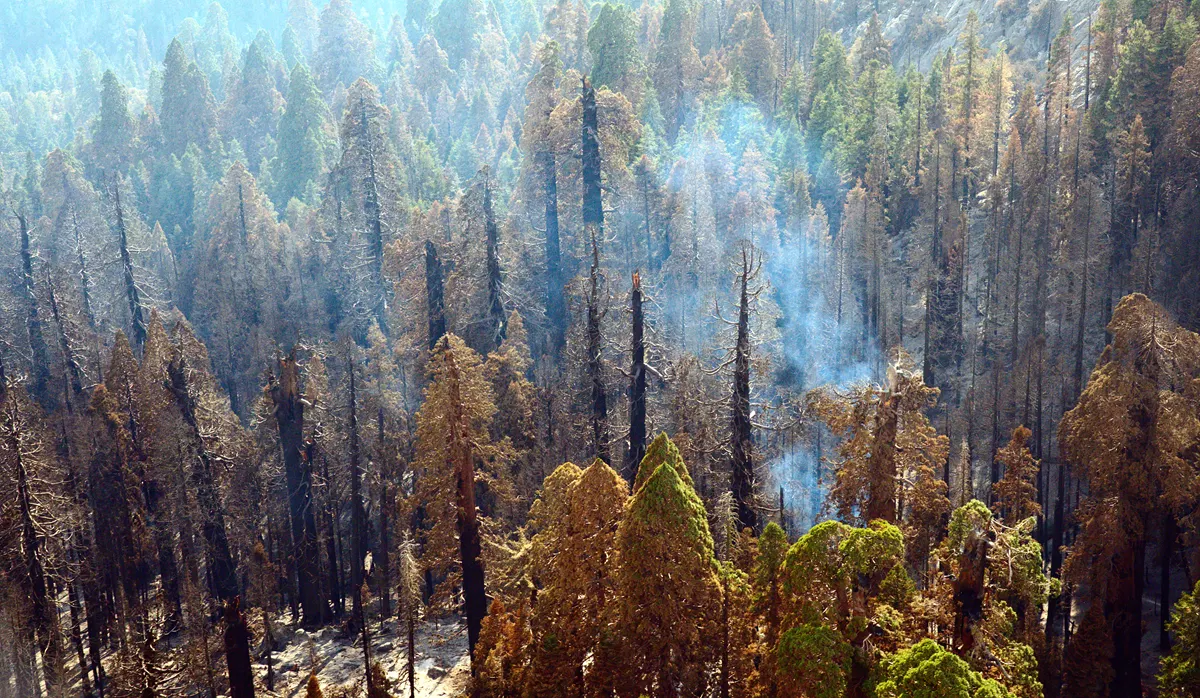- NDVI has decreased in 2022 compare to previous years, especially compared to 2020, 2016, 2014
- NDVI has decreased throughout the grove, but at more extreme rates in some areas

Severity of KNP Complex Fire
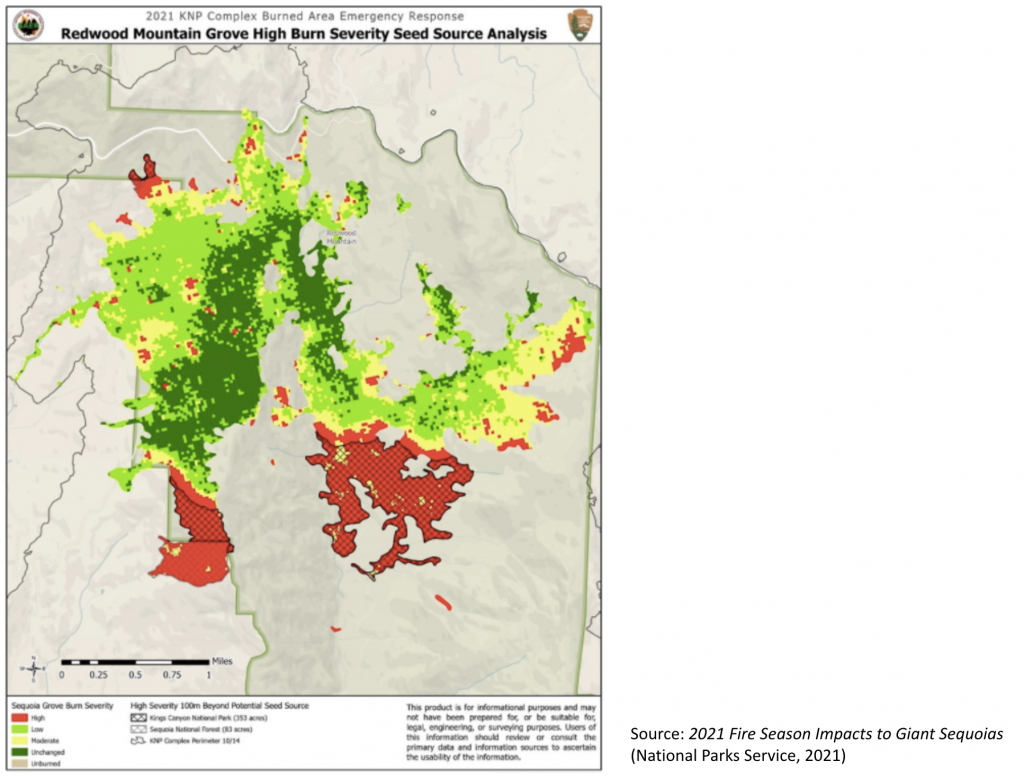
CHANGE IN NDVI: KNP COMPLEX FIRE
- Largest decrease in NDVI occurred in the areas that experienced highest fire severity
- Redwood Mountain Grove had highest acreage with high burn severity and most change in NDVI

- Overall, NDVI decreased in 2022 compared to previous years
- Within the groves, there are parts where NDVI decreased and parts where NDVI remains high
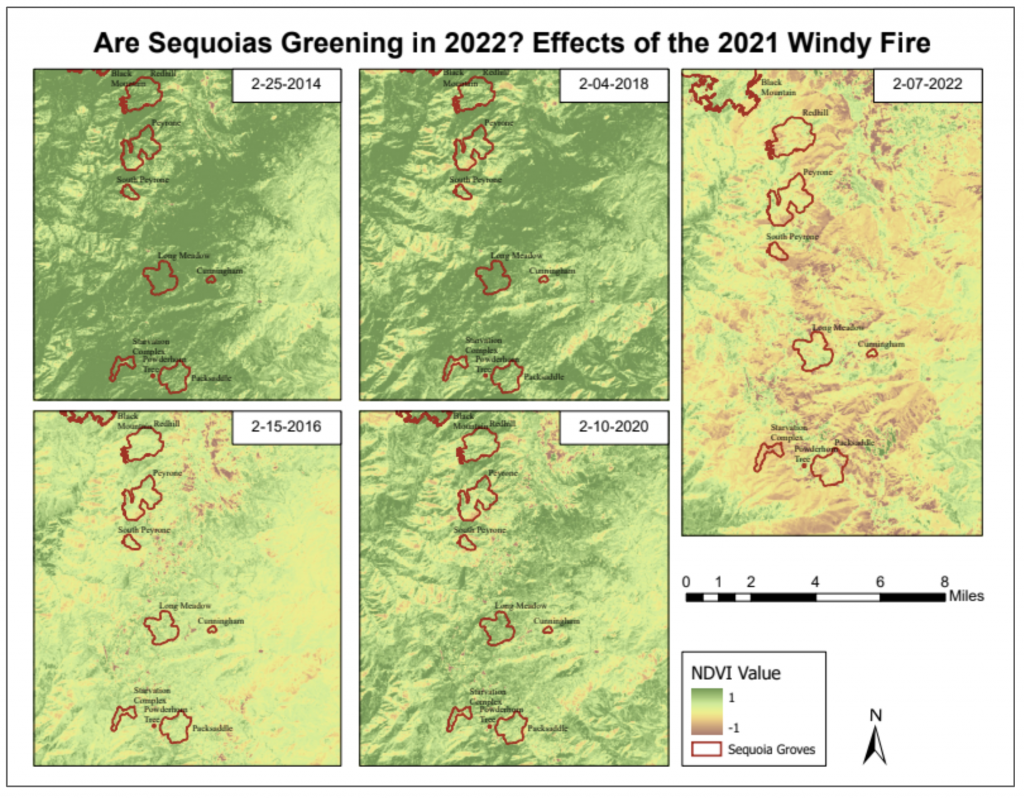
SEVERITY OF WINDY FIRE
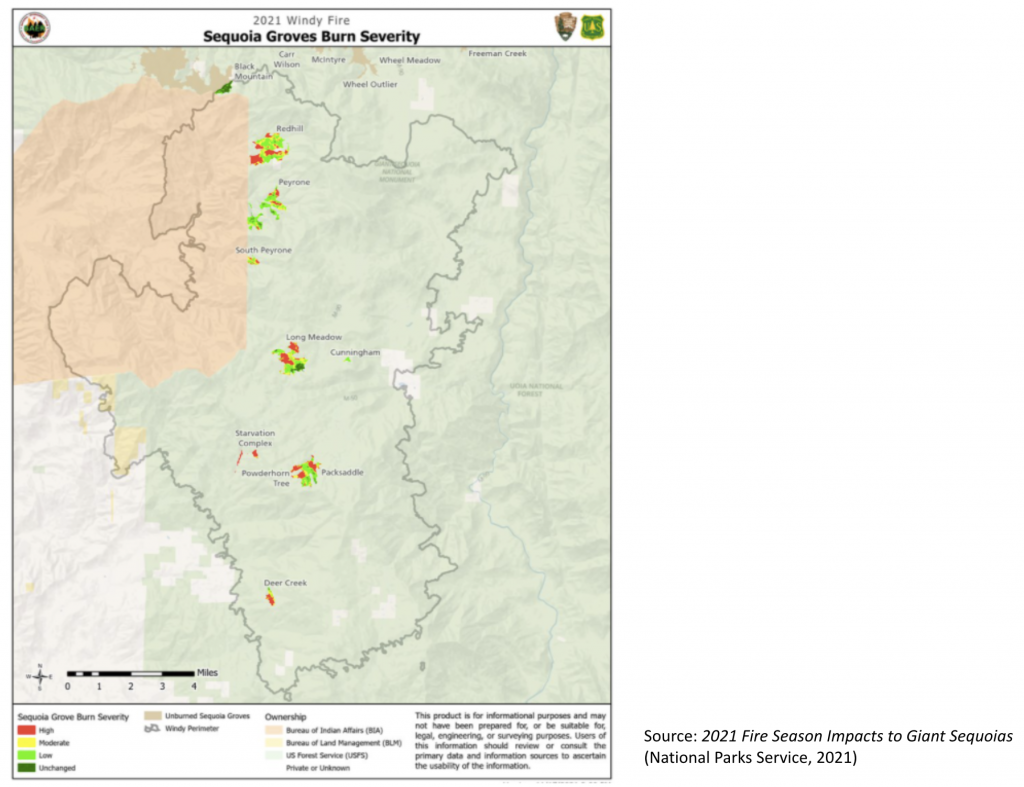
CHANGE IN NDVI: WINDY FIRE
- Similar to KNP Fire, parts of the groves that burned with most severity experienced largest decrease in NDVI
- Burn severity and decrease in greening seem closely correlated
- Although Sequoias are adapted to regeneration after wildfires, NDVI following fires in high severity areas has suffered (Shive, Brigham, Caprio, & Hardwick, 2021)
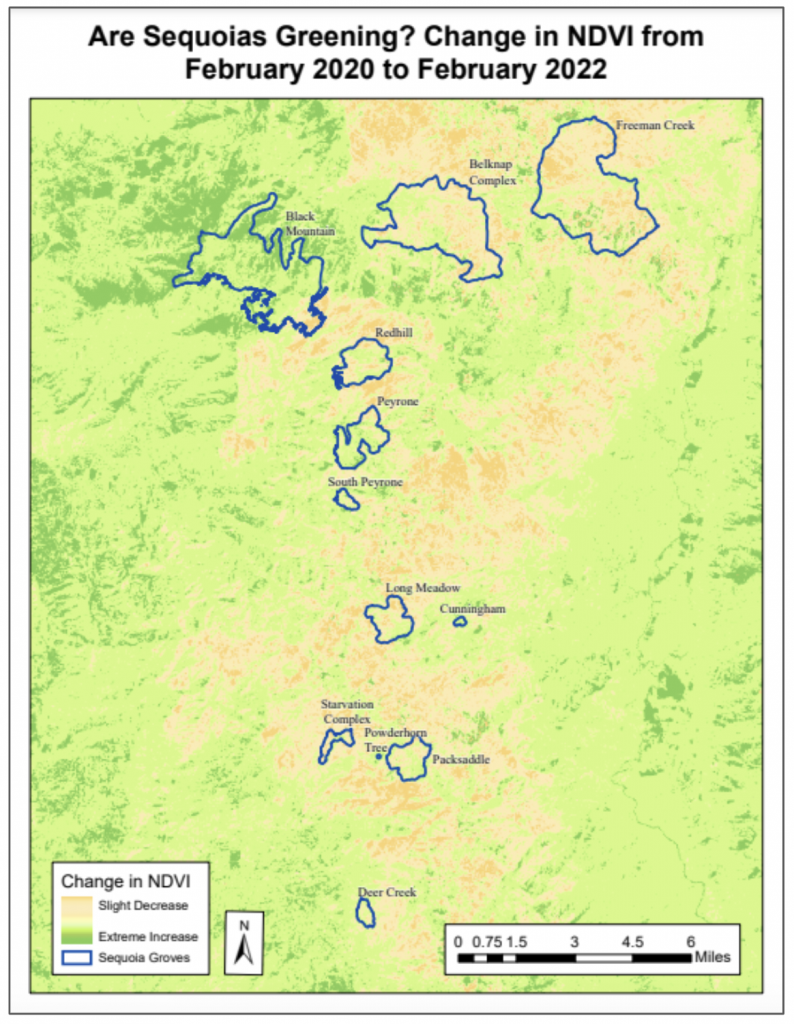
SUPPORTING STATISTICS
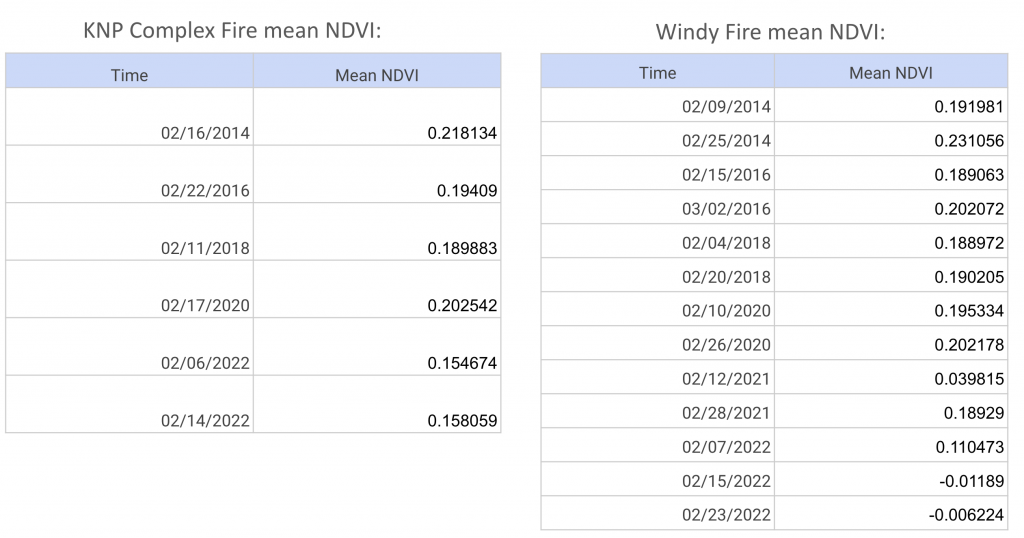
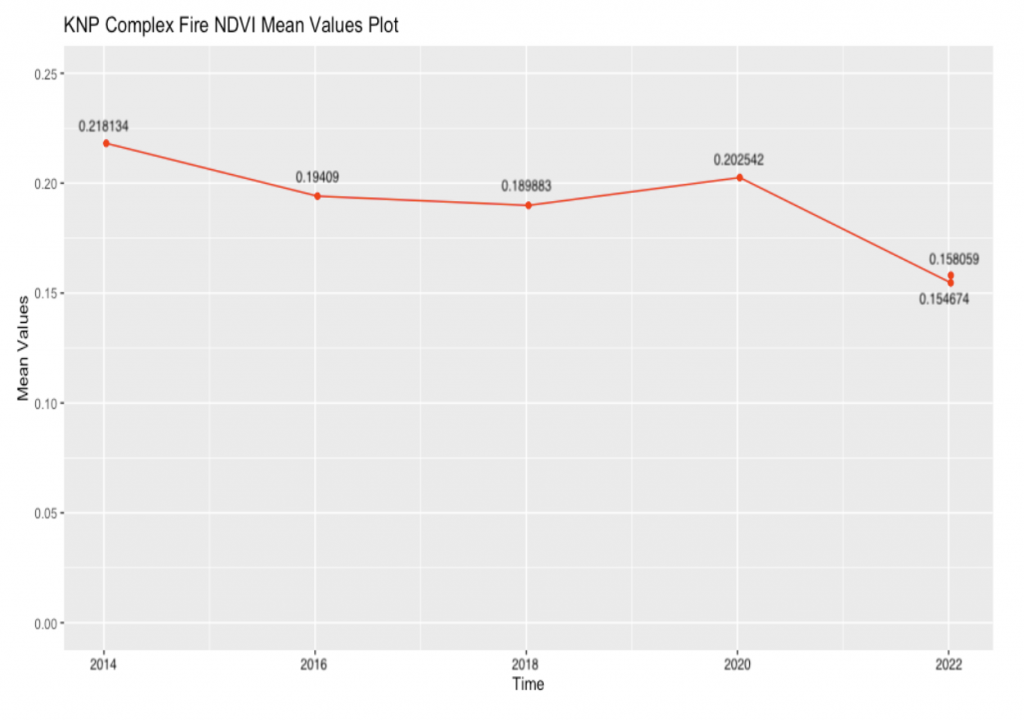

- Not much change in NDVI mean values in each year.
- Slight increase in NDVI mean values within one year, which shows potential regreening.
- Overall significant decrease in NDVI mean values in 2022 due to KNP Complex Fire and Windy Fire
REGENERATION FAILURE IN HIGH SEVERITY BURN AREAS?
- NDVI change in high severity area in KNP Complex Fire: decreases from 0.18 (2020.02) to 0.12 (2022.02)
- NDVI change in high severity area in Windy Fire: decreases from 0.19 (2020.02) to -0.01 (2022.02)
SUGGESTIONS:
- Due to the short time interval between the fire and our study, we cannot determine whether regeneration happens at present
- Future regeneration monitoring efforts are needed
- Active replanting of giant sequoias in high severity areas might be necessary if regeneration from survived seeds is inadequate
